This workshop will help participants to understand how Facebook tries to keep users who want to leave the social network from doing so by offering a lot of reasons why deleting one’s account would be a bad idea.
General Objective
Preparation time for facilitator
Competence area
Time needed to complete activity (for learner)
Name of author
Support material needed for training
Resource originally created in
Introduction
The below activities will only be useful if participants are already aware of how to protect their personal data. It is the securing of our data that is really the most important subject when wanting to quit Facebook. This resource may also be used in conjunction with ‘Visualising Data for a Young Audience‘
Workshop preparation
Print and cut out the role-playing cards, so that each participant has one card. The game requires 5 players. If there are more than 5, you can have it so that up to 3 people can play the obstacles. You will have to lay out a strong or woollen thread to represent the path the player will need to take. It will look like this:
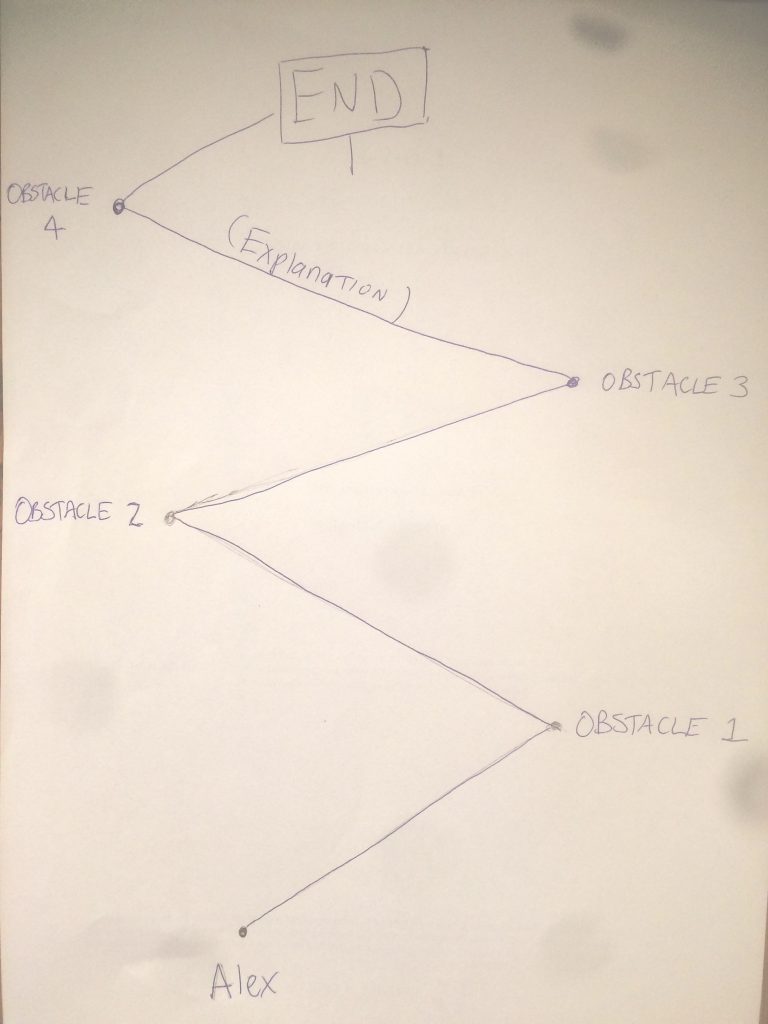
Starting the game
Explain to participants that quitting Facebook is a journey littered with many traps. You will not be asking them to really quit Facebook but to simulate the deletion of an account in the form of a game. For this, every participant will have a role defined in a distributed card. The facilitator leads the game. You will first name the participant who will need to delete the account called Alex (or whichever name you choose). Alex will follow a predetermined path traced with a string or thread. At each step, or obstacle, they will need to face a hurdle – another participant who will try to tempt them into changing their minds and stay on the social network. Explain that, while this is a simulation the obstacles they will encounter actually exist. The questions that these hurdles will ask them are the same that Facebook asks you when you try to delete your account. Before starting, each participant takes a card that will define their role. There will be: Alex, obstacle 1, obstacle 2, obstacle 4 and obstacle 4. Aside from their role, each participant will need to be familiar with Alex’s profile. The information on his/her card will be useful in convincing them to stay! Here is Alex’s profile card.
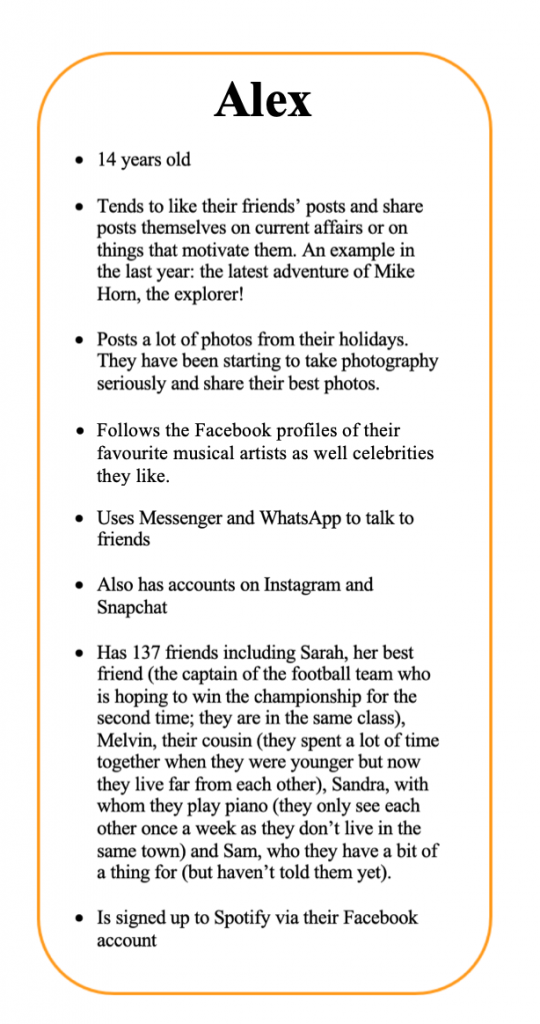
In italics is written what you will need to say to follow the thread of deletion (see to the details in any way you see fit!) Alex starts at the beginning of the path. They first announce ‘I’m quitting Facebook!’ before heading towards the first obstacle.
First obstacle – one participant
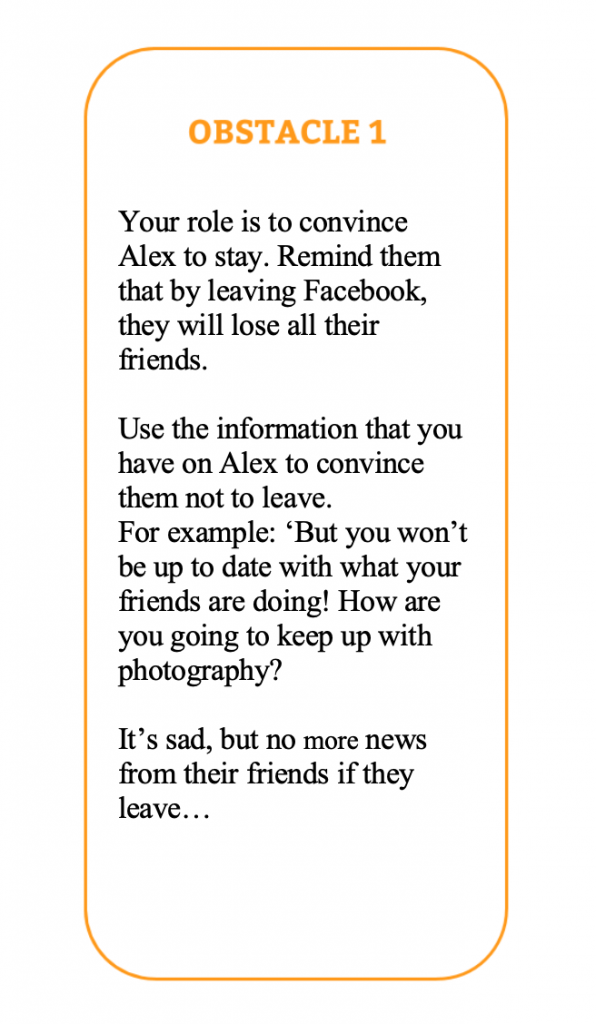
This obstacle should: Ask Alex if they feel guilty. Ask them what they will do without Facebook to get news from their friends when they want. Demand they tell you how they will do it. Invite them to change their mind if they want. Alex must now advance to the second obstacle.
Second obstacle – another participant
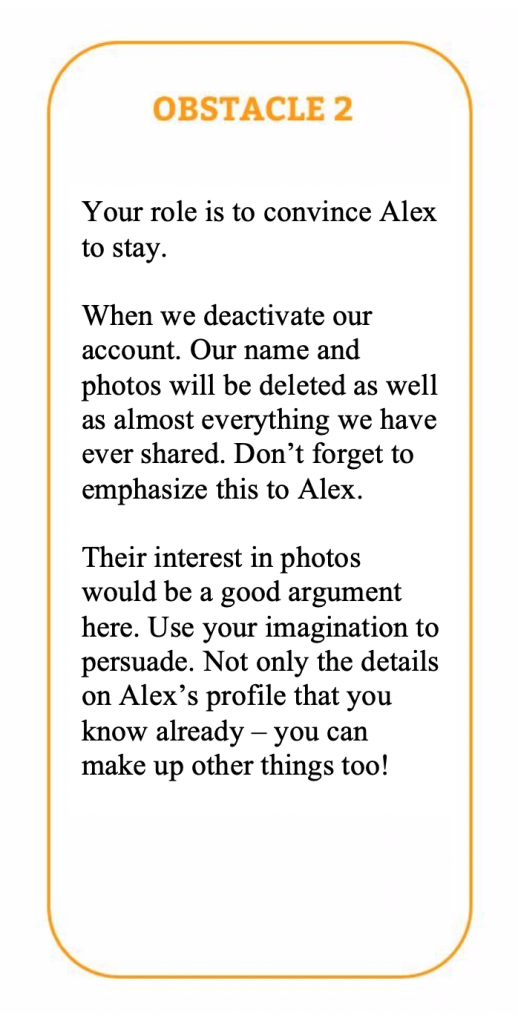
The facilitator should remind the group that Alex’s profile is only a basis from which they have make up any details they want. Obstacle 2 should ask Alex how they feel and what they will do about their photos. Invite them now to change their minds.
Third obstacle
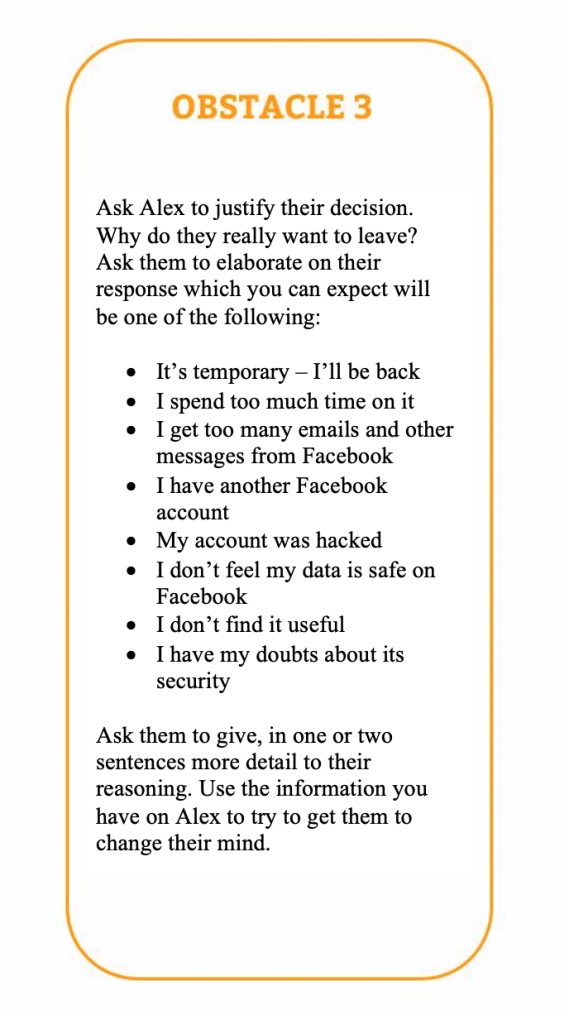
At this moment, explain that up to now, your account is merely deactivated. This means that if Alex comes back, they will have access to their account as normal! To really delete an account, things are not so simple – it is almost impossible in fact to discover how to do it by only searching in your account settings. You actually have to be curious enough to search the internet for the page ‘Permanently delete account‘.
(Note to facilitator: if you have the means, you can show the page). The account will now be deleted in 14 days. Facebook leaves you time to change your mind. If within two weeks, you decide to reconnect, that stops the process and the account will not be deleted. However, even beyond these 14 days your data – photos, status updates and other information – takes around 90 days to be really deleted, according to the social network. But it’s not over yet – there are still other things waiting to stop you.
Fourth obstacle
Explain that while quitting Facebook is good, if the goal is to refuse to leave your personal data available to the network, you need to remain coherent to the end of the process. It must especially be realised that Facebook interferes with our privacy more than we realise.
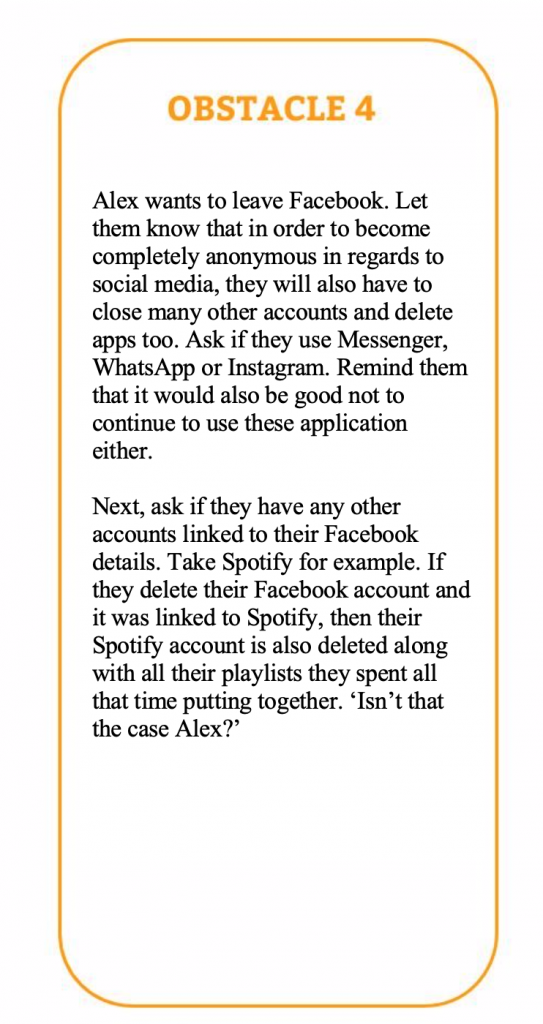
The game is over! Arrange the participants in a circle and ask them if they ever would have thought that so much was linked to their Facebook accounts.
Going further
To learn more if there are computers available, ask members of the group to go to their Facebook account and download their data. Follow these steps once on the account: Settings -> General ->Download Your Information. This will show them how much data Facebook has on them.